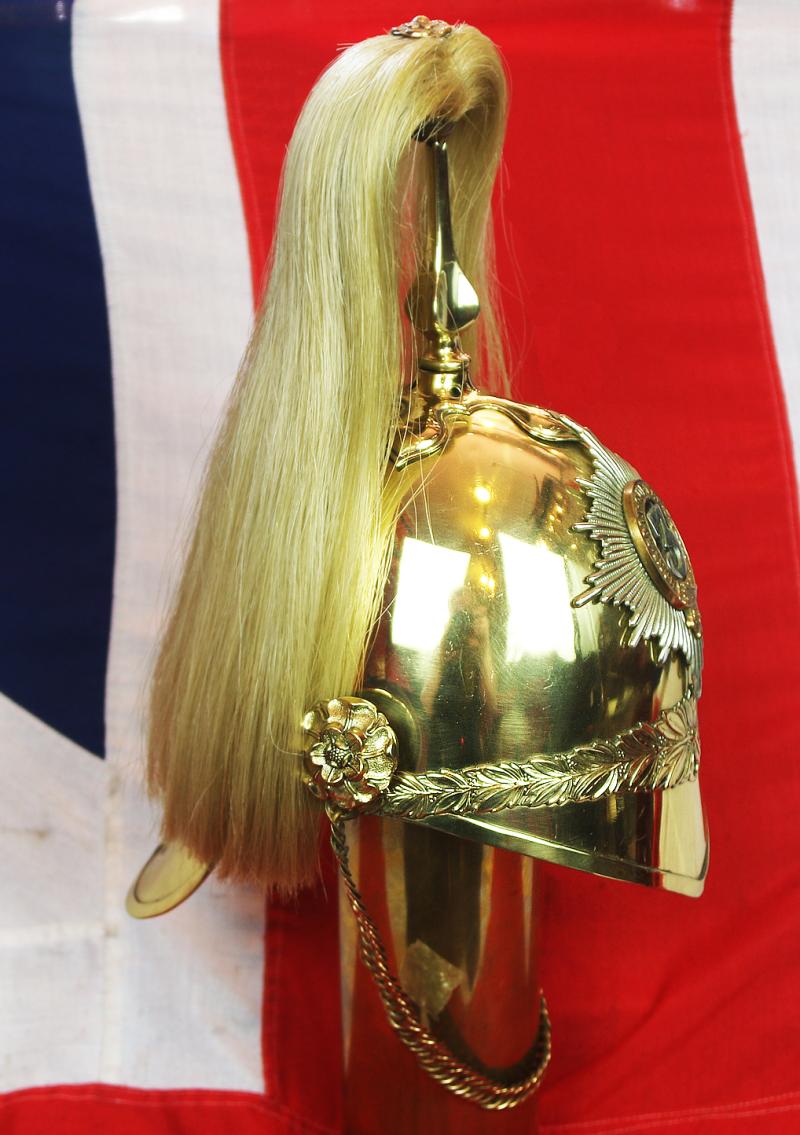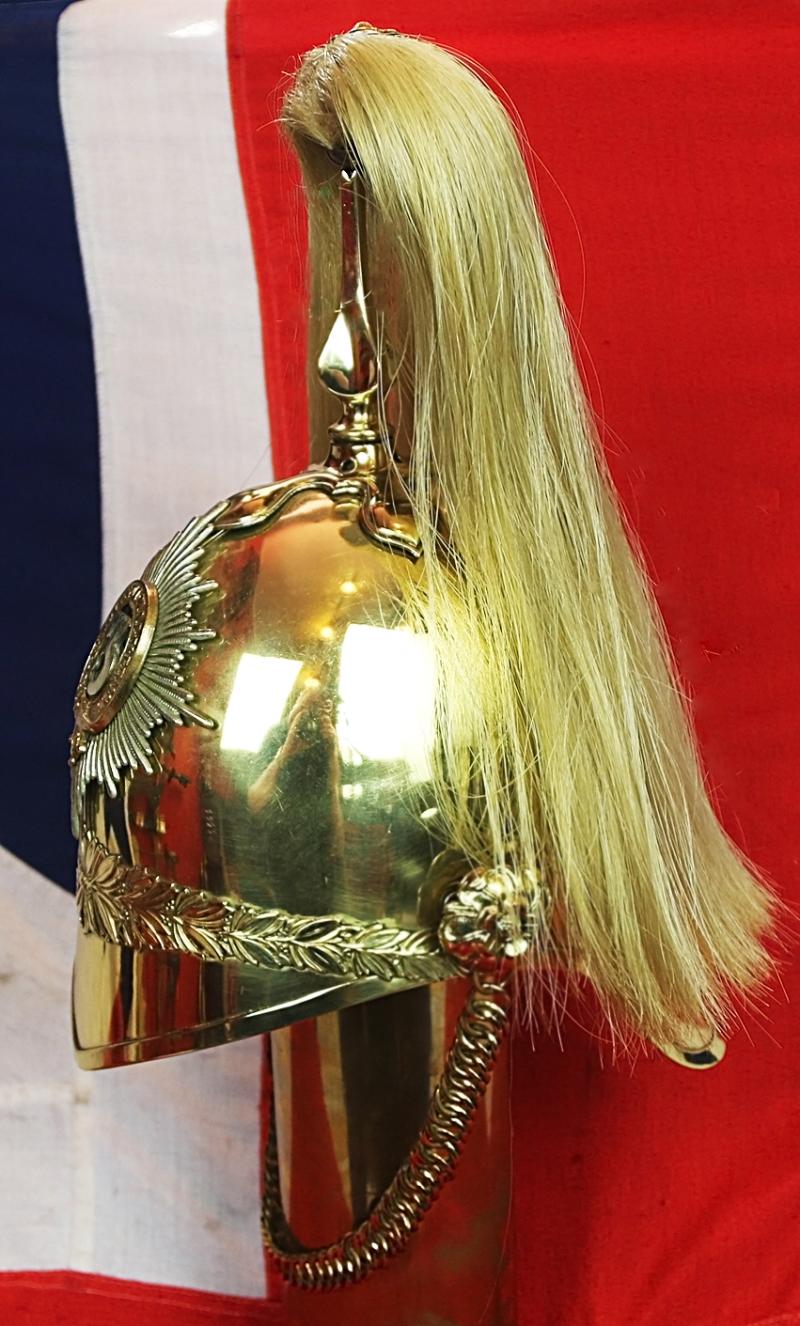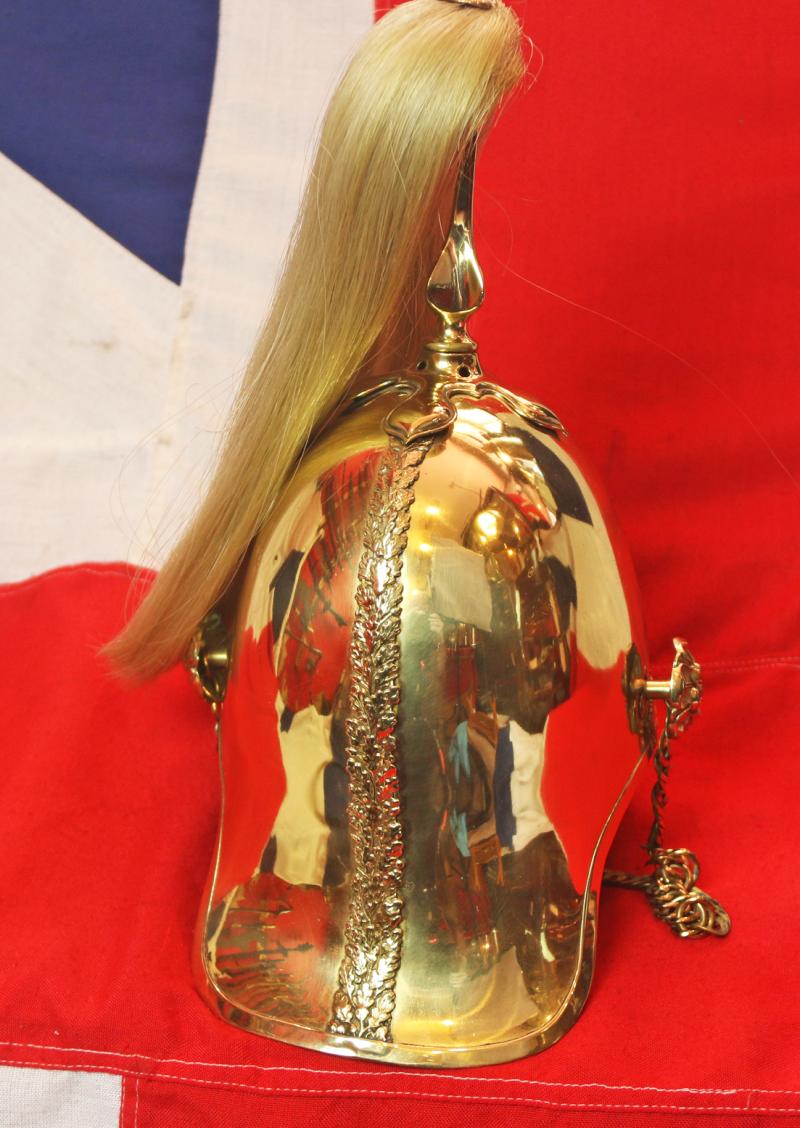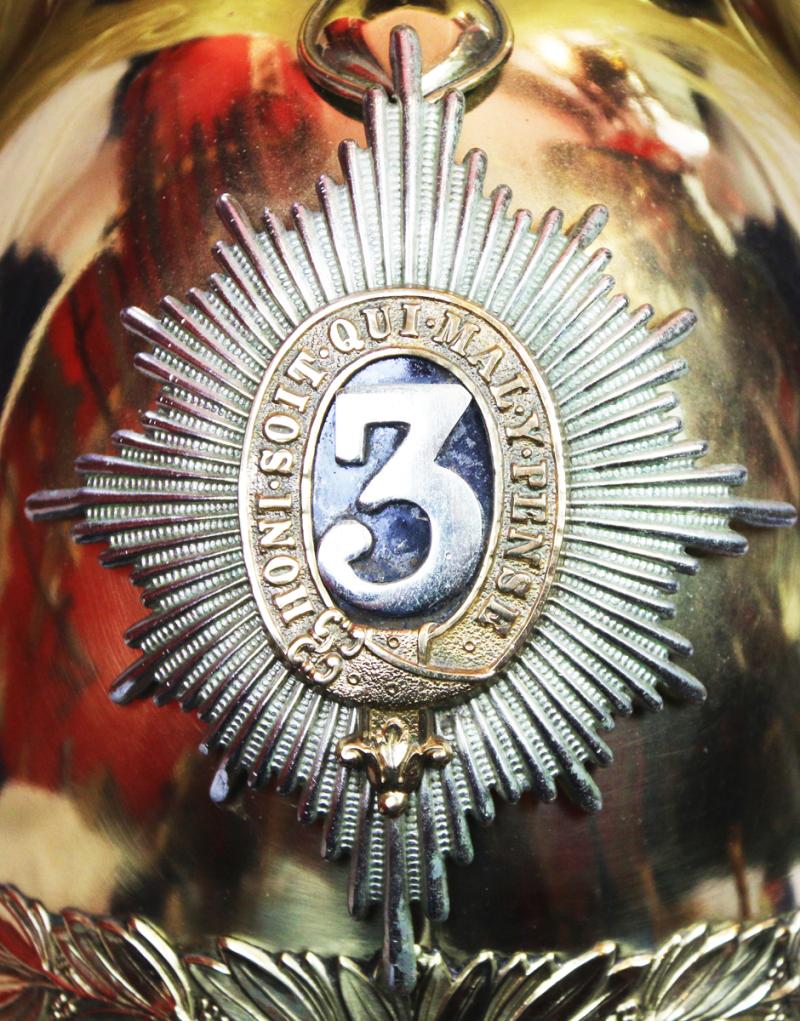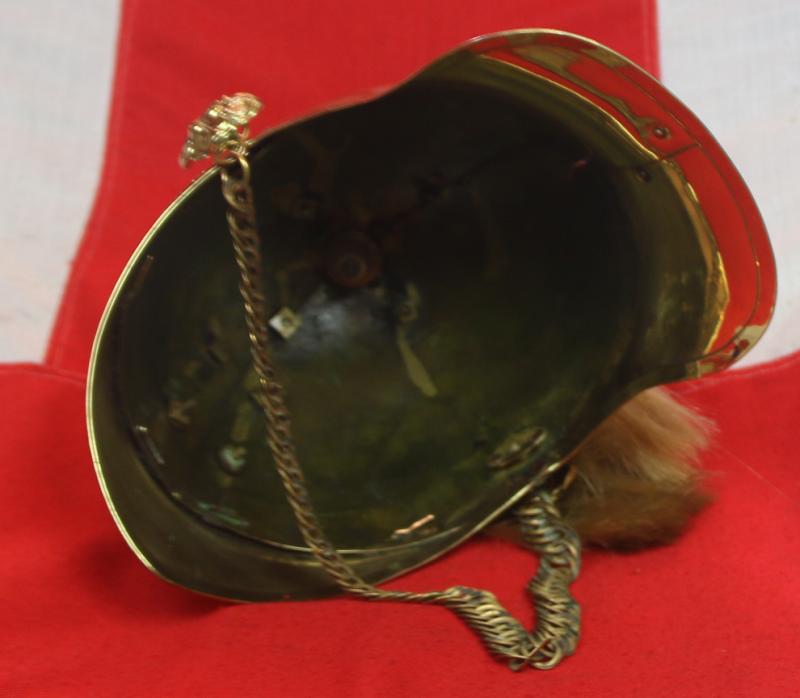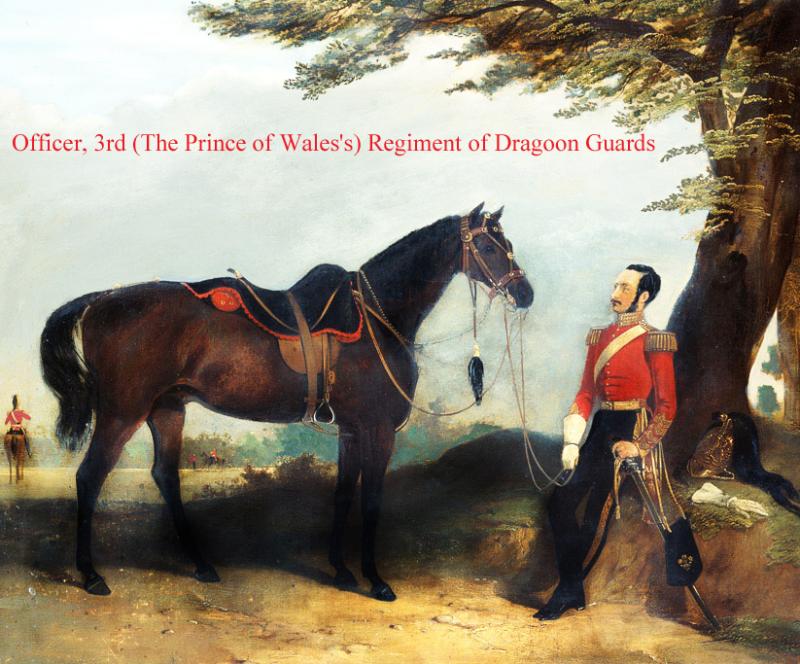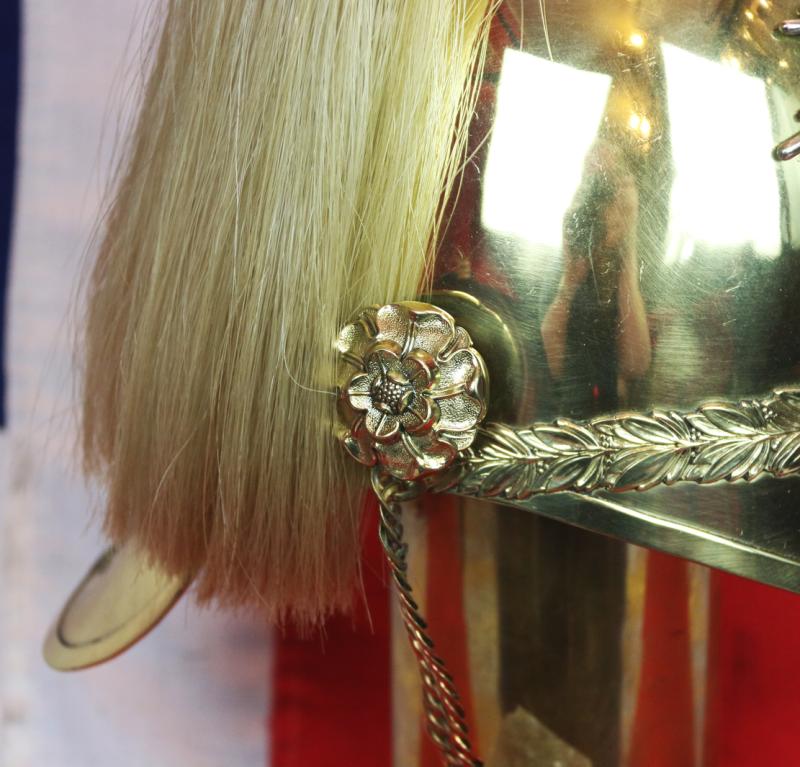A Superb and Exemplary Original Service Issue Victorian Helmet of the 3rd {Prince of Wales} Regiment of Dragoon Guards
A Beautiful helmet of brass and white metal, with garter badge of the 3DG, overall in superb condition with chinscales. One of the best surviving examples one can see in our out of a museum
The 3rd (Prince of Wales's) Dragoon Guards was a cavalry regiment in the British Army, first raised in 1685 as the Earl of Plymouth's Regiment of Horse. It was renamed as the 3rd Regiment of Dragoon Guards in 1751 and the 3rd (Prince of Wales's) Dragoon Guards in 1765.
From 1809 to the end of the Napoleonic Wars (1803-15), it was in the Peninsula, serving at Talavera (1809), Busaco (1810), Torres Vedras (1810), Albuera (1811), Badajoz (1811), Ciudad Rodrigo (1812), Salamanca (1812), Burgos (1812) and Vitoria (1813).
The regiment then spent most of the 19th century on home service. It charged rioters in Bristol in 1831 and was kept in Ireland on garrison duties during the Crimean War (1854-56).
However, it did deploy to India from 1857 to 1868, and from 1884 to 1895. In 1868, it was also the only British cavalry unit to participate in the Abysinnia Expedition (1867-68).
The regiment was deployed to the Boer War (1899-1902) from 1901 to 1902, taking part in the anti-guerrilla operations in the Transvaal and Orange Free State. It then spent time in Ireland, England and Egypt on garrison duties.
The 3rd Dragoon Guards arrived on the Western Front in October 1914. It remained there for the entire First World War (1914-18), taking part in many engagements including the first and second battles of Ypres (1914 and 1915), Loos (1915), Arras (1917), Cambrai (1917), St Quentin (1918) and Amiens (1918).
British Dragoon Guards Regiments
1st King's Dragoon Guards (1746, from The King's Own Regiment of Horse); amalgamated to form 1st The Queen's Dragoon Guards (1959)
2nd Queen's Dragoon Guards (1746, from The Princess of Wales's Own Regiment of Horse); redesignated 2nd Dragoon Guards (Queen's Bays) (1872); redesignated The Queen's Bays (2nd Dragoon Guards) (1921); amalgamated to form 1st The Queen's Dragoon Guards (1959)
3rd Dragoon Guards (1747, from 4th Regiment of Horse); redesignated 3rd (Prince of Wales's) Dragoon Guards (1765); amalgamated to form 3rd/6th Dragoon Guards (1922); redesignated 3rd Carabiniers (Prince of Wales's Dragoon Guards) (1928); amalgamated with Royal Scots Greys (2nd Dragoons) to form Royal Scots Dragoon Guards (Carabiniers and Greys) (1971)
4th (Royal Irish) Dragoon Guards (1788, from 1st Irish Horse); redesignated 4th Royal Irish Dragoon Guards (1921); amalgamated to form 4th/7th Dragoon Guards (1922); redesignated 4th/7th Royal Dragoon Guards (1936); amalgamated to form Royal Dragoon Guards (1992)
5th Dragoon Guards (1788, from 2nd Irish Horse); redesignated 5th (Princess Charlotte of Wales's) Dragoon Guards (1804); redesignated 5th Dragoon Guards (Princess Charlotte of Wales's) (1920); amalgamated with The Inniskillings (6th Dragoons) to form 5th/6th Dragoons (1922); redesignated 5th Inniskilling Dragoon Guards (1927); redesignated 5th Royal Inniskilling Dragoon Guards (1935); amalgamated to form Royal Dragoon Guards (1992)
6th Dragoon Guards (The Carabiniers) (1788, from 3rd Irish Horse); redesignated The Carabiniers (6th Dragoon Guards) (1920); amalgamated to form 3rd/6th Dragoon Guards (1922)
7th (The Princess Royal's) Dragoon Guards (1788, from 4th Irish Horse); redesignated 7th Dragoon Guards (Princess Royal's) (1921); amalgamated to form 4th/7th Dragoon Guards (1922)
The Dragoon Guards regiments were converted to armoured cars and tanks during the 1930s. There are still three Dragoon Guards regiments in the British Army:
No liner, the regular plume would be black and red. Army practice it’s likely that different coloured plumes, other than their regular colours, relate to Trumpeters and Farriers (as still practised in the Household Cavalry). A very light and small amount of denting to the skull.
Code: 25326
1850.00 GBP


